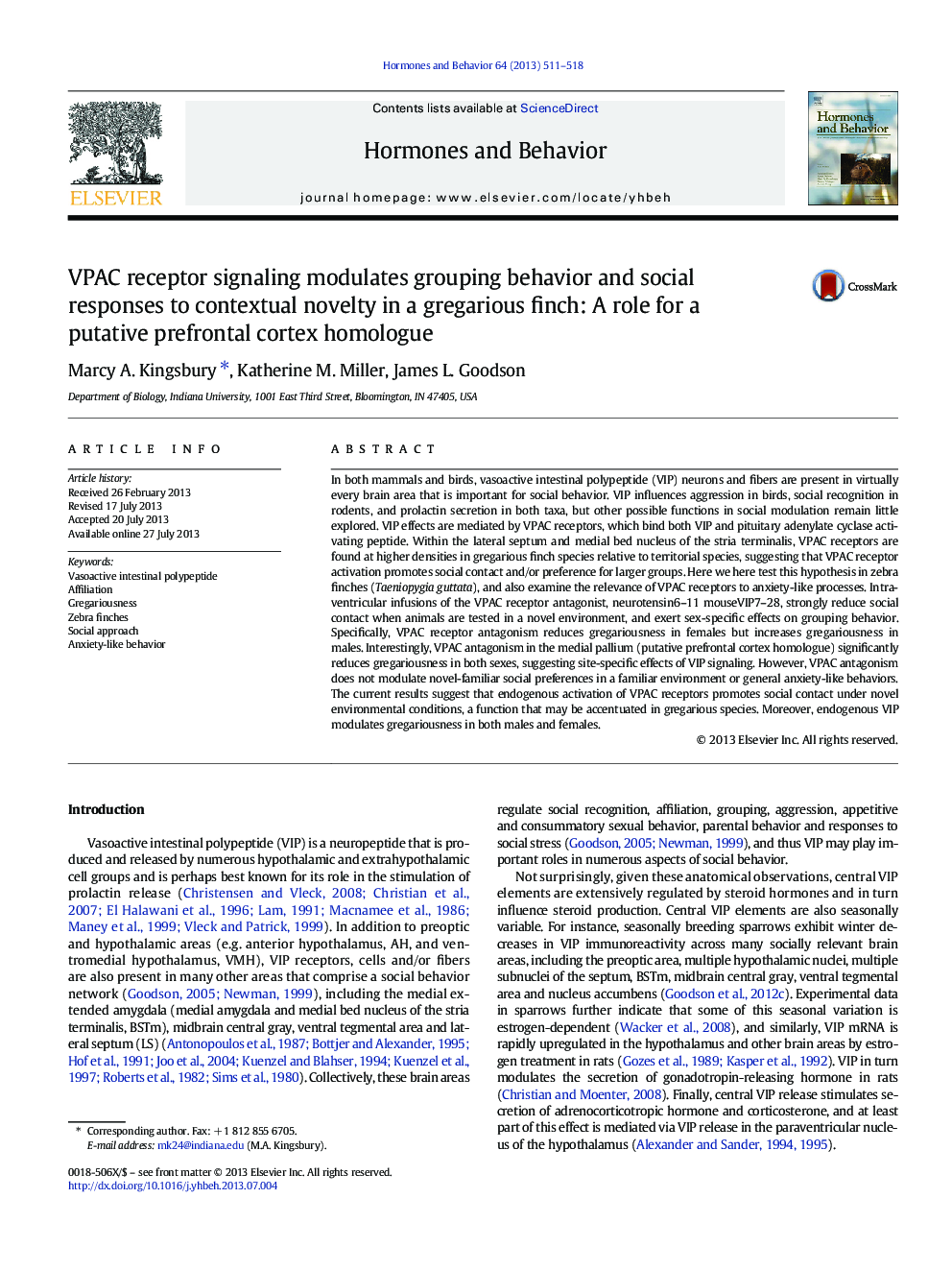| Article ID | Journal | Published Year | Pages | File Type |
|---|---|---|---|---|
| 10301100 | Hormones and Behavior | 2013 | 8 Pages |
Abstract
In both mammals and birds, vasoactive intestinal polypeptide (VIP) neurons and fibers are present in virtually every brain area that is important for social behavior. VIP influences aggression in birds, social recognition in rodents, and prolactin secretion in both taxa, but other possible functions in social modulation remain little explored. VIP effects are mediated by VPAC receptors, which bind both VIP and pituitary adenylate cyclase activating peptide. Within the lateral septum and medial bed nucleus of the stria terminalis, VPAC receptors are found at higher densities in gregarious finch species relative to territorial species, suggesting that VPAC receptor activation promotes social contact and/or preference for larger groups. Here we here test this hypothesis in zebra finches (Taeniopygia guttata), and also examine the relevance of VPAC receptors to anxiety-like processes. Intraventricular infusions of the VPAC receptor antagonist, neurotensin6-11 mouseVIP7-28, strongly reduce social contact when animals are tested in a novel environment, and exert sex-specific effects on grouping behavior. Specifically, VPAC receptor antagonism reduces gregariousness in females but increases gregariousness in males. Interestingly, VPAC antagonism in the medial pallium (putative prefrontal cortex homologue) significantly reduces gregariousness in both sexes, suggesting site-specific effects of VIP signaling. However, VPAC antagonism does not modulate novel-familiar social preferences in a familiar environment or general anxiety-like behaviors. The current results suggest that endogenous activation of VPAC receptors promotes social contact under novel environmental conditions, a function that may be accentuated in gregarious species. Moreover, endogenous VIP modulates gregariousness in both males and females.
Keywords
Related Topics
Life Sciences
Biochemistry, Genetics and Molecular Biology
Endocrinology
Authors
Marcy A. Kingsbury, Katherine M. Miller, James L. Goodson,
